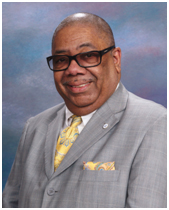
By Rev. Donald L. Perryman, Ph.D.
The Truth Contributor
Organizational agility, innovation, and growth are really difficult without engaged [leaders]. – Ken Oehler
Congratulations to departing University of Toledo President Gregory Postel, MD, who parlayed his half-million salary in Toledo into a $1.35 million position as senior vice president for health affairs and dean of the College of Medicine at the University of Cincinnati.
Dr. Postel brought a wealth of knowledge from his medical training and past administrative responsibilities, most notably at the University of Louisville, to his position at the University of Toledo.
However, his recent comments to The Blade expressing his excitement over focusing on medical issues and engaging with respected colleagues in Cincinnati demonstrate his strong dedication to the medical aspect of higher education.
More specifically, this change shows that Postel’s involvement while leading UT was, perhaps, focused on specific sectors of the university, notably those linked with his knowledge and previous experiences, rather than a broad-based integration into the Toledo community or the university as a whole.
Indeed, Dr. Postel’s time at UT was marked by considerable challenges, such as dealing with pandemic-related issues and financial instabilities, notably those concerning the University of Toledo Medical Center (UTMC). Despite these challenges, his leadership was notably appreciated for guiding the institution through these tumultuous times.
However, while Postel departs for greener pastures, the University of Toledo, like many other schools, continues to grapple with a major unresolved crisis: declining enrollment and the financial consequences that come with it.
The University of Toledo’s spring enrollment has persistently declined, most recently dropping 2.9 percent from the previous year to 13,951 students. These results mark a significant decrease from the 23,085 students enrolled in 2010. In contrast, Bowling Green State University not only reported increases in enrollment but also achieved a record-high retention rate of 93 percent for new, first-time students.
Declining Enrollment and its Financial Impact
Declining enrollment and retention rates greatly impact college and university financial stability, mostly due to decreasing tuition revenue, which is critical for operating budgets. This decline in revenue raises per-student expenditures and may impact state and federal financing based on enrollment. Financial pressures may also reduce credit ratings, raise borrowing prices, and compel cuts in academic programs, faculty and student services, lowering educational quality and the institution’s appeal. This fiscal uncertainty may lead to a never-ending spiral of future enrollment decreases.
Furthermore, financial insecurity lowers alum donations and external assistance, both of which are critical for funding scholarships and initiatives.
In response to low enrollment and retention rates, the University of Toledo canceled or consolidated 48 academic programs.
UT Provost Scott Molitor justified discontinuing the specific academic programs in order to reallocate faculty resources more efficiently. However, the university community reacted harshly, with students such as sophomore Nick Livucchi in disbelief and retired biochemistry professor Dave Dignam denouncing the changes as unwise and poorly motivated. This demonstrated a disconnect between administrative decisions and academic community expectations.
Effective Enrollment and Retention Management
Unlike roles where leadership may operate at a high level and rely primarily on team reports, successful enrollment and retention management necessitates leaders’ direct engagement with data and active participation in day-to-day operations, according to administrators who have successfully delivered positive enrollment outcomes.
“What people don’t understand about [retention and enrollment management] is it’s not one of these administrative responsibilities where you can be at a 30,000-foot level and rely on your team to merely report. You have to get your hands dirty; roll up your sleeves.”
Another administrator told me that you cannot have an enrollment vice president who lives in Tennessee and commutes back and forth to the University, as UT was said to rely.
Equity Issues and Retention
Moreover, addressing enrollment and retention challenges in higher education is closely linked to resolving equity issues. Researchers indicate that the general decline in enrollment numbers has been particularly sharp among underrepresented groups. This insight aligns with the need for institutions to address equity gaps more aggressively.
In paying attention to the needs of underrepresented students and closing equity gaps, successful universities and colleges also reorient or modernize archaic faculty modes of thinking.
“Some faculty still think it’s a virtue to flunk everybody, and so we’ve examined high-failed gateway courses and had faculty go through workshops to interpret the data, redesign courses, and then track their progress towards decreasing them,” another source also told me.
These high-failure gateway courses disproportionately affect minority students. Therefore, institutions can significantly improve retention and success rates among their most vulnerable populations by transforming these courses through faculty workshops and data-driven redesigns.
Another aspect of the equity issue linked to enrollment and retention became particularly evident at the University of Toledo, where the university halted scholarships for Black and Latino students following the recent Supreme Court ruling on admissions.
This decision sparked a substantial backlash from these communities, prompting them to consider setting up independent foundations to ensure funds are used to support educational opportunities specifically for their communities “as originally intended.”
Above all, addressing equity challenges in higher education requires a genuine commitment to understanding and meeting the diverse needs of the student body, thereby creating an inclusive environment that supports both enrollment and retention.
Future Directions
Dr. Postel’s departure is undoubtedly a significant change, but it also presents an opportunity for fresh perspectives at the helm of the University of Toledo.
The challenges are stark, as highlighted by former Toledo Mayor Carty Finkbeiner, who noted the city’s economic struggles and their impact on the university.
Therefore, Postel’s successor must engage, immerse, and “spend a lot of time listening” to understand the institution’s complexities to navigate it toward a more sustainable and prosperous future.
With “engaged leadership,” UT can ensure it remains a vital part of not only the Toledo community but also the broader landscape of higher education.
Contact Rev. Donald Perryman, PhD, at drdlperryman@centerofhopebaptist.org
